DIY Solar Pool Heater: Warm Your Pool for Under $100
March 16th, 2024
March 16th, 2024
Turning your pool into an oasis of warmth can often seem like a costly endeavor, but what if you could harness the sun’s energy without breaking the bank? On crisp mornings, the allure of a solar-heated pool promises a refreshing dip without the shock of icy water. Many pool owners face the annual dilemma of how to extend their swimming season without soaring energy bills. The answer might be simpler than you think: a DIY solar pool heater that costs less than $100.
Years ago, a friend of mine, tired of chilly underwater escapades, decided to tinker with some affordable materials over a weekend. With a few garden hoses, a piece of plywood, and a dash of creativity, he managed to heat his pool efficiently. His homegrown solution not only warmed the water but also sparked a newfound hobby in solar energy projects. Inspired by his success, many have since adopted similar methods, discovering that with a bit of elbow grease, they too could bask in sun-warmed waters.
This guide aims to walk you through the process of constructing your own solar pool heater, sharing practical advice and innovative ideas. From selecting the right materials to understanding the principles of solar heating, you’ll learn how to transform your pool into a welcoming retreat. Dive into a world where ingenuity meets sustainability, and enjoy the satisfaction of a warmer pool season that doesn’t empty your wallet.
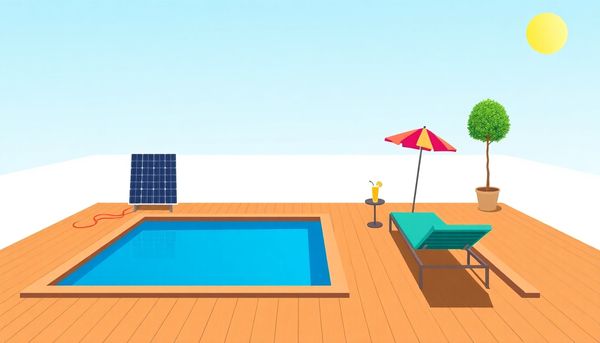
Crafting your own solar pool heater is both an economical adventure and a satisfying project. Gather your materials first: about 100 feet of black irrigation tubing, a small sump pump, hose clamps, and a flat, sun-drenched surface like a piece of plywood or an old pallet. For the uninitiated, black tubing is your secret weapon. Its color absorbs heat from the sun, warming the water that flows through it.
Start by coiling the tubing tightly on your chosen surface, securing it with zip ties or clamps. Connect one end to the sump pump, which will draw cooler water from your pool. The other end returns the heated water back into your pool. It's like creating a simple but efficient water circuit, powered by nothing more than sunlight.
I recall my own foray into DIY solar heating began with a skeptical glance at that coiled tubing. But when the water began streaming back into the pool, noticeably warmer, I was hooked. You might not rival a professional-grade heater, but the satisfaction of watching your innovation work wonders is well worth the effort.
To boost efficiency, position your setup where the sun is unobstructed throughout the day, perhaps against a south-facing wall or on a sunlit roof. Remember, patience is key—allow the system time to circulate and gradually raise the pool's temperature. With minimal investment, you're not just saving money but harnessing the sun's generous bounty.
Much like deciding where to plant a garden, the success of your solar pool heater hinges significantly on its location. Finding the perfect spot involves more than merely picking a sunny corner. Rather, it's about thinking strategically, as if you were playing a game of chess with nature.
Start by observing how the sun moves across your backyard throughout the day. Ideally, the solar heater should bask in at least six to eight hours of direct sunlight daily, maximizing its efficiency. A south-facing position is often preferred, as it captures the most consistent sunlight. If a south-facing spot isn't feasible, a western exposure can also do the trick, capturing the afternoon rays when the sun is at its peak.
Avoid areas that are easily overshadowed by trees, fences, or buildings. These shade-creators can significantly reduce the effectiveness of your heater, leaving your pool feeling more like a dip in the Arctic than a tropical oasis. Moreover, ensure the surface where you plan to anchor your DIY setup is sturdy and slightly elevated. This helps with the natural circulation of water and prevents pesky ground-level obstructions.
Remember, the aim is to harness the sun’s power efficiently. It’s like setting up camp in the sunniest part of the metaphorical meadow, where nature's warmth can embrace your pool just right. With a bit of careful planning, you’ll not only save on energy costs but also extend your swimming season.
When embarking on the journey of creating a solar pool heater, the first step is to gather the right supplies. Think of it like assembling the pieces of a puzzle where each component plays a crucial role in the efficiency of your solar heater. Start with a length of black irrigation tubing. Typically, 100 feet should suffice, but you might want a little extra to ensure the water gets plenty of time to sunbathe. This tubing acts as the main conduit, absorbing solar energy and warming the water as it flows through.
Next, a small, energy-efficient sump pump is essential. This unsung hero pulls the cooler water from your pool and pushes it through the tubing, allowing the sun to work its magic. Look for one that can handle your pool size without breaking the bank. Beyond these, a plywood board serves as a sturdy base. This platform keeps your tubing securely coiled and elevated, optimizing sun exposure. For added efficiency, consider painting the board black to enhance heat absorption.
To keep everything snug and in place, zip ties come in handy. They are perfect for securing your tubing coils, ensuring they stay neat and compact. A few plumbing fittings and adapters might also be required to connect the tubing to your pool’s existing pump system.
Incorporating these elements not only promises a warmer pool but also transforms your backyard into a hub of innovation. With these supplies in hand, you're well on your way to a cost-effective and eco-friendly swimming experience.
When it comes to harnessing the sun's energy to heat your pool, the devil—or in this case, the warmth—is in the details. First, consider the placement of your solar pool heater. An unobstructed, sun-drenched area will ensure your black tubing soaks up maximum solar rays throughout the day. A south-facing spot is ideal, as it captures the sun's arc from dawn till dusk, supercharging your heater's efficiency.
Next, the tubing’s arrangement is crucial. Winding it into a tight coil increases surface area, allowing more heat absorption. While a loose coil may suffice, a tightly wound spiral optimizes the heating process, ensuring every inch of tubing is exposed to sunlight. If you’re feeling crafty, constructing a simple frame to elevate your coil can further enhance exposure and aid in gravitational water flow, reducing the sump pump’s workload.
Be mindful of the materials you choose. Black polyethylene tubing, known for its heat-absorbing properties, is your best bet. Avoid alternatives like garden hoses, which lack the appropriate diameter and material composition for efficient heat transfer. Lastly, augment your setup with a solar blanket to trap warmth in your pool overnight. This simple addition can make a significant difference, preserving the heat gained during the day and minimizing thermal loss once the sun sets. With these tweaks, your DIY solar pool heater will be the epitome of efficiency, stretching every cent of that $100 budget.
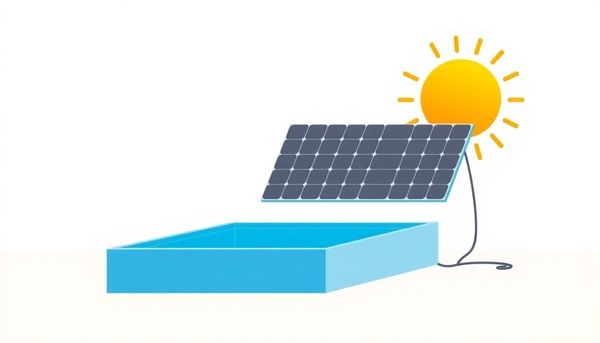
Turning your backyard into a sun-powered oasis doesn’t have to be a bank-breaking affair. With just a few ingenious tweaks and under $100, you can harness the sun’s energy to make your pool invitingly warm even on the chilliest days. The secret lies in a simple yet effective DIY solar pool heater that channels solar energy directly into your pool's water. You’ll need a few key materials: a sump pump, black irrigation tubing, and a sunny spot to lay out your masterpiece.
Envision the process: the sun heats the black tubing, sending warmth through it and back into the pool. Such a setup not only slashes your energy bills but also gives you a playful science experiment to tinker with on a lazy weekend. I remember building one last summer—my kids were fascinated by how quickly the water warmed up. Watching the sun do its magic was rewarding and saved us from the headache of costly energy bills.
However, success depends on a few considerations. Positioning is crucial; ensure your heater sits in an area that basks in sunlight most of the day. While it's less potent than industrial solar panels, the satisfaction of crafting something effective and environmentally friendly is incomparable. And don’t forget the solar blanket! It’s the perfect companion to conserve the generated heat overnight, ensuring your pool remains inviting all day long.
Crafting your own solar pool heater can be a rewarding and surprisingly straightforward endeavor. Begin by identifying a sunny location near your pool—perhaps a patio or roof space. This spot will serve as the base for the heart of your heater: a coil of black irrigation poly tubing. The tubing harnesses the sun’s heat, efficiently warming the water as it flows through. You'll also need a small sump pump to circulate the water, pulling the cooler liquid from your pool into the tubing.
Start by acquiring about 100 feet of this black tubing, which you can find at most hardware stores for a modest price. Lay the tubing out in a flat spiral on a piece of plywood, securing its shape with zip ties or clamps. This design maximizes sun exposure, mimicking how snakes bask in the sun to warm up—it's an age-old technique enhanced by modern material. Next, connect the tubing to an inexpensive sump pump, available from online retailers or local hardware outlets.
Once your spiral is set up, connect the pump to your pool using simple PVC connectors, ensuring the water flows seamlessly from the pool, through the tubing, and back. You may want to elevate the setup slightly to allow gravity to assist in water circulation. With everything in place, turn on the pump and watch as your DIY solar heater quietly starts doing its job. While it won't replace commercial systems' power, it offers an economical and eco-friendly alternative, perfect for above-ground pools.
Harnessing the power of the sun to heat your pool is both an art and a science. A key element in maximizing the efficiency of your DIY solar pool heater is strategic placement. Seek out a sunny location, unobstructed by trees or buildings, where your black tubing coil can soak up the most sunlight throughout the day. This simple step can significantly boost the heat absorption and, consequently, the temperature of your pool water.
Another effective strategy is to enhance insulation. While the black tubing does a remarkable job of absorbing heat, preventing heat loss is equally crucial. Wrapping the base of your setup with reflective material, such as aluminum foil, can help concentrate the sun’s rays onto the tubing, thereby increasing the water temperature. Additionally, consider using a solar cover on your pool. It acts like a warm blanket, trapping the heat during the night and reducing evaporation, ensuring that the sun’s hard work doesn’t go to waste.
Lastly, don’t hesitate to tweak the system. Regularly check for leaks or blockages in the tubing that might reduce flow efficiency. If possible, elevate your coil slightly to improve water circulation. Personal experience shows that even small adjustments can lead to significant improvements in performance. By paying attention to these details, you’ll not only enhance the efficiency of your DIY heater but also prolong its lifespan, ensuring a warm swim season after season.
When venturing into the realm of DIY solar pool heaters, selecting the right materials can make or break your project. The heart of this system is the black tubing, which harnesses the sun's rays to heat your pool water. Opt for black irrigation poly tubing over a garden hose; its material and diameter are specifically suited to maximize heat absorption. A roll of 200 feet should suffice, usually costing around $25 to $30.
For the base, plywood is your best friend. It’s sturdy enough to hold the coils of tubing and can be elevated to catch optimal sunlight. An old wooden pallet, if you have one lying around, works wonders too and keeps the budget in check. You'll also need a sump pump to circulate the water through the tubing. A modest, submersible pump can be found for about $40.
Clamps and zip ties are essential for securing the tubing in place, preventing it from uncoiling or shifting. You might find these in your garage, but if not, they’re inexpensive at any hardware store. Don’t forget fittings to connect the tubing to your pool’s existing plumbing without leaks.
Finally, a bit of weather-resistant black paint can enhance the plywood’s heat absorption, adding a few degrees to your setup without much additional cost. Investing a few extra dollars in these materials ensures that your solar pool heater performs efficiently, allowing you to bask in a warm pool without burning through your savings.
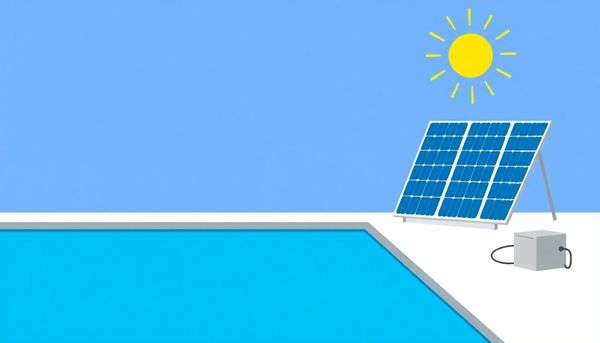
Tapping into the sun's warmth is a resourceful way to keep your pool inviting, even in cooler months. To squeeze every bit of efficiency from your DIY solar pool heater, attention to detail is key. First, consider the orientation and angle of your setup. South-facing exposure ensures maximum sunlight absorption throughout the day, heating the water more effectively. Placing the black tubing on a slanted surface, like a roof or a specially constructed frame, can increase contact with direct sunlight.
Complementing your solar setup with a thermal pool cover can work wonders. When your DIY system warms the water during the day, a pool cover helps trap that heat overnight, preventing the chilly air from undoing your hard work. A solar blanket, for instance, acts like a snug winter coat for your pool, reducing heat loss significantly.
Maintenance plays its part in efficiency, too. Regularly check your tubing for leaks or blockages, as these can interrupt the flow and reduce heating capability. Keeping the tubing clean from dust and debris ensures unobstructed sunlight reach. On particularly sunny days, increase the water flow slightly to maximize the amount of water being heated.
Finally, consider insulating the tubing with foam or reflective material to minimize heat loss when the water is being transported back to the pool. These small enhancements can make a significant difference, turning your humble DIY project into an efficient, eco-friendly heating machine.
Crafting a solar heater for your pool can become an unexpectedly rewarding weekend project. My own journey into this began with a simple question from my neighbor about lowering his pool heating costs. The solution was under the sun, literally, and it sparked an idea to harness solar power in a cost-effective way.
First, gather your materials: black polyethylene tubing, a small sump pump, and a couple of hose connectors. It’s surprising how these few items can transform sunlight into warmth for your pool. Pick a spot in your yard that bathes in sunlight for most of the day. I found my garage roof to be just right, away from shadows and clutter.
Unroll the tubing in a flat, coiled pattern, resembling a large snail shell. This maximizes the surface area exposed to the sun. Secure it with zip ties to prevent any unwinding. Connect one end of the tubing to your sump pump, submerging the pump in the pool's cooler waters. As the pump operates, water travels through the sunlit tubing, warming along its journey, before returning to the pool.
During my own build, tweaking the angle of the coil helped increase efficiency. Such a setup costs under $100, and though it lacks the power of commercial models, its simplicity and sustainability are hard to beat. Enhancing with a solar blanket can further lock in warmth for those cooler nights, ensuring your pool stays inviting.
In the world of DIY, selecting the right materials can be the difference between a successful project and a frustrating endeavor. When setting out to build your solar pool heater, focus on the essentials. First, consider the tubing. Black irrigation poly tubing is your best friend here. Its dark color absorbs sunlight more efficiently, warming your pool water faster. Unlike a garden hose, which can vary in material and diameter, poly tubing ensures consistency and durability, perfect for your solar setup.
To support this tubing, think about the frame. A simple wooden platform or even a repurposed old pallet can serve as a sturdy base. Just make sure it’s placed in a sunny spot, perhaps against a south-facing wall or on a roof. This elevated position not only maximizes sun exposure but also aids gravity in water flow, making your heater more efficient.
Next, don’t overlook the clamps and connectors. These will ensure your tubing stays secure and leak-free. While rummaging through your toolbox or local hardware store, select stainless steel clamps. They resist rust and corrosion, traits vital for a system frequently exposed to water and sunlight.
Lastly, a reliable sump pump rounds out your material list. It should be powerful enough to circulate water through the tubing but not so robust that it overshoots your budget. Scour garage sales or online marketplaces for a second-hand pump—often, you can snag a bargain, keeping your project well below the $100 mark.
Harnessing the sun to keep your pool comfortably warm can feel like a minor miracle, especially when you accomplish it on a shoestring budget. But to truly optimize your DIY solar pool heater, a few strategic decisions can make all the difference. Start by positioning your solar heater in the sunniest spot available, preferably elevated to maximize sun exposure. This simple adjustment can boost the efficiency of your setup significantly.
Consider the length and diameter of your black tubing. A coil of generous length allows for more extensive exposure to sunlight, which means your water has more time to heat up as it travels through the system. Opt for tubing with a smaller diameter if possible, as it increases the surface area of water in contact with the heated material, thus improving heat absorption.
Adding a reflective surface beneath the tubing can further enhance the sun's impact. Aluminum foil or a reflective pool cover can bounce additional sunlight onto your coils, increasing the heating potential. Speaking of covers, using a solar pool cover to trap warmth overnight can help maintain the increased water temperature, reducing the amount of work your solar heater needs to do each day.
In my experience, tweaking these small details can turn your DIY project from a basic setup into an efficient, sustainable heating solution, perfect for those sunny swim days. With a bit of creativity and attention to detail, your under-$100 setup can outperform expectations and keep you swimming comfortably all season long.
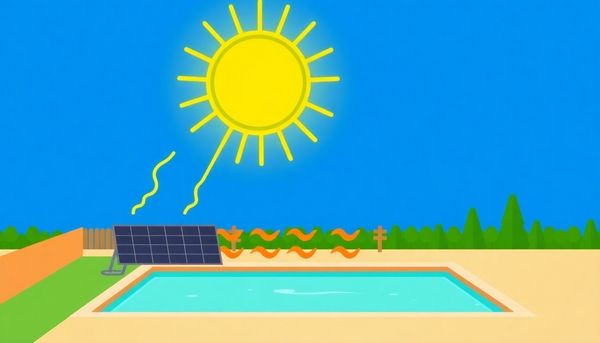
Why spend hundreds of dollars on commercial solar panels when a bit of creativity and elbow grease can achieve similar results for a fraction of the cost? The allure of sleek, professional solar systems is hard to ignore, but their price tags often don't reflect their true value for basic needs, especially when it comes to heating a pool. Instead, channel those funds into a simple DIY solar pool heater that harnesses the sun’s energy without emptying your wallet.
My neighbor, Tom, once splurged on high-end solar panels for his pool, only to find they weren’t as efficient during the cloudy months. Watching his frustration inspired me to turn to DIY solutions, and I’ve never looked back. Armed with a sump pump and a few coils of black tubing, I set out to create a solar heater that would keep our pool warm and inviting. This setup, nestled on a sun-drenched patch of backyard, transformed chilly water into a comfortable oasis—all for less than $100.
The project’s beauty lies not only in its cost-effectiveness but also in its simplicity and adaptability. Unlike commercial panels, you can tweak and tailor your design with ease. So, keep it straightforward; save your cash for poolside barbecues, and let the sun do the heavy lifting, just like it did for Tom and me.
Crafting a solar pool heater from scratch is an adventure that promises both savings and satisfaction. A few summers ago, inspired by the need to swim in comfortably warm waters without breaking the bank, I embarked on this very project. The initial step involves gathering materials: black irrigation tubing, a small sump pump, adapters, and some wooden planks. These components, when pieced together, form the heart of your heater, working harmoniously to channel the sun’s warmth into your pool.
Positioning is key. Select a sun-drenched area, ideally a rooftop or a raised platform, to maximize exposure and efficiency. Roll out the black tubing, forming a flat spiral, and secure it onto a sturdy wooden board using zip ties or clamps. This setup will act as your solar collector. As sunlight hits the black surface, it heats up significantly, efficiently warming the water flowing through.
Connecting the system to your pool is straightforward. Attach the sump pump to one end of the coil to pull cooler water from the pool. The water snakes through the sun-warmed tubing, emerging heated on the other side, before rejoining the pool. It's a simple yet effective cycle. While it may not transform your pool into a hot spring, this DIY heater is a testament to the power of ingenuity and renewable energy. It’s satisfying to see how a weekend project can extend your swimming season and keep utility bills in check.
Harnessing every ray of sunshine to heat your pool doesn't just save money, it also feels like a small victory. The magic begins with selecting the perfect location for your solar pool heater. Search for a spot that basks in sunlight for most of the day, ideally without any trees or structures casting shadows. Elevating the setup, even slightly off the ground, can prevent unnecessary heat loss and enhance the efficiency of your heater.
Once your location is set, think about the angle. In most regions, tilting your solar coils to face south, at an angle roughly equal to your latitude, can significantly boost performance. It’s like giving your solar heater a sunbathing strategy—maximum exposure, minimum waste. For those willing to go the extra mile, consider installing reflective surfaces beneath or around your coils. Metal sheets or reflective foil can bounce additional sunlight onto your tubing, offering a subtle yet impactful increase in heat absorption.
Remember, optimizing the tubing’s layout is just as crucial. Spiral your black tubing tightly to ensure the water travels through as many sun-kissed loops as possible before re-entering your pool. If you're handy with tools, crafting a wooden or metal frame to support this coiling can prevent tangles and keep everything neat. With these small adjustments, your DIY solar heater becomes not just a cost-saving project, but a testament to clever, sustainable design.
Embarking on a DIY solar pool heater project is akin to piecing together a puzzle where each component serves a purpose. The key is to select materials that won’t break the bank while still effectively harnessing the sun’s energy. Start with black irrigation poly tubing. It acts as the heart of your system, efficiently absorbing heat from the sunlight. A friend once rummaged through her garden shed and found some leftover tubing from an old landscaping project, which she repurposed, cutting costs significantly.
Next, consider a sump pump. Opt for a second-hand model if you can, as they often work perfectly after a little TLC. Thrift stores or neighborhood online marketplaces can be treasure troves for budget-friendly finds. Similarly, when looking for a base to elevate your setup, think creatively. An old pallet or a sturdy piece of plywood you have lying around may serve as an excellent platform, ensuring the tubing gets maximum sun exposure.
Clamps and fittings are crucial for securing your system. They don’t need to be fancy; standard models from your local hardware store will suffice. It’s the little details like these that make sure water flows smoothly through your setup without unnecessary leaks. When constructing your own DIY solar pool heater, remember, resourcefulness is your best friend. These small, savvy choices can keep your budget under $100 while creating a functional and efficient system.
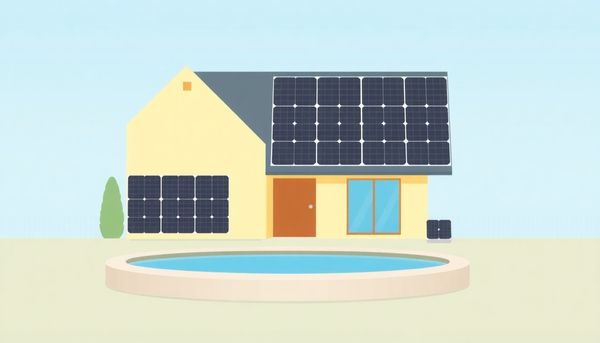
Sunshine has always been a generous ally when it comes to heating up water, and tapping into its power is easier than you might think. Imagine lounging by a pool that's perfectly warmed by a contraption you built yourself for less than the cost of a concert ticket. Crafting your own solar pool heater isn't just economical; it's a rewarding venture that brings a bit of engineering magic into your backyard.
This solar heater thrives on simplicity. The heart of the system is a coil of black polyethylene tubing—chosen for its efficiency in absorbing sunlight and transferring that warmth to your pool. As the sun beams down, this tubing collects the heat and channels it into the water that circulates through it. A small, robust sump pump does the heavy lifting, drawing the cooler pool water into the tubing and sending it back, delightfully warmed, into your pool.
Locating the ideal setup spot can be as fun as assembling the heater itself. You’ll want a sunny location that can catch the most rays throughout the day. A south-facing patch of ground or even a sturdy rooftop works wonders. For less than $100, you'll need basic supplies like tubing, clamps, and a pump—all easily found at your local hardware store. In no time, you’ll not only have a warmer pool but also the satisfaction of a DIY project well done, all powered by the sun's generous gift.
Under the sun's relentless gaze, a simple yet ingenious solution awaits to transform your pool into a warmer oasis. With a small investment and some elbow grease, crafting a solar pool heater can be both a rewarding and economical project. Imagine the satisfaction of taking a dip in water heated by nature itself, all for less than $100.
The heart of this project lies in the black tubing, which absorbs the sun’s rays with remarkable efficiency. To get started, gather a coil of black irrigation tubing, a sump pump, a few connectors, and some sturdy zip ties. You’ll also need a wooden panel or wire rack to mount the tubing, allowing it to lie flat in a sun-soaked spot. As the sun works its magic, colder water from your pool will be drawn into the tubing, heated, and then returned to your pool, creating a cycle of warmth.
Select a location with the most direct sunlight—perhaps the roof of your shed or a sun-bathed corner of your yard. It doesn’t need to be fancy, just functional. Carefully coil the tubing onto the panel, securing it with zip ties to maintain its shape and maximize exposure to the sun. Connect the pump to the tubing, with one end pulling water from the pool and the other returning it, now warmed, back to its watery home.
While this setup won’t rival commercial heating systems, it’s perfect for above-ground pools and offers a eco-friendly, cost-effective way to extend your swimming season. Embrace this DIY adventure and feel the satisfaction that comes from harnessing the sun's warmth, one sunbeam at a time.
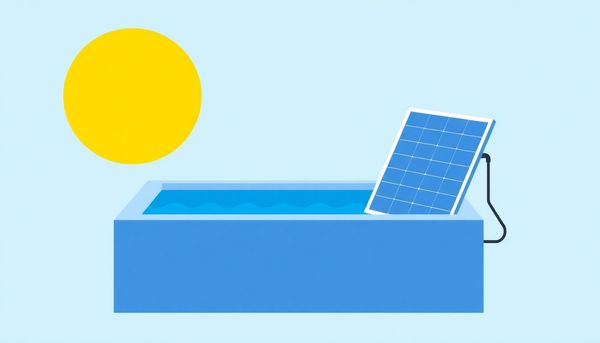
This article provided insights into maintaining your pool. Start your pool care journey today!
Want to become a pool maintenance expert? Our free Pool School course covers everything you need to know about pool care. From basic maintenance to advanced troubleshooting, you'll learn how to:
Join over 10,000 pool owners who have already transformed their pool care routine. Get started with our free Pool School course today!